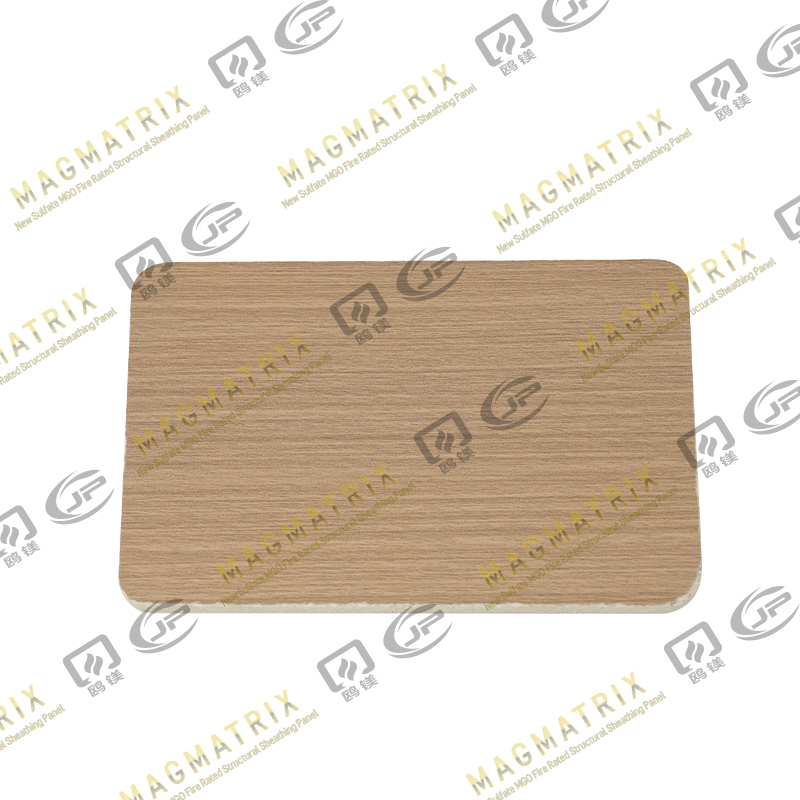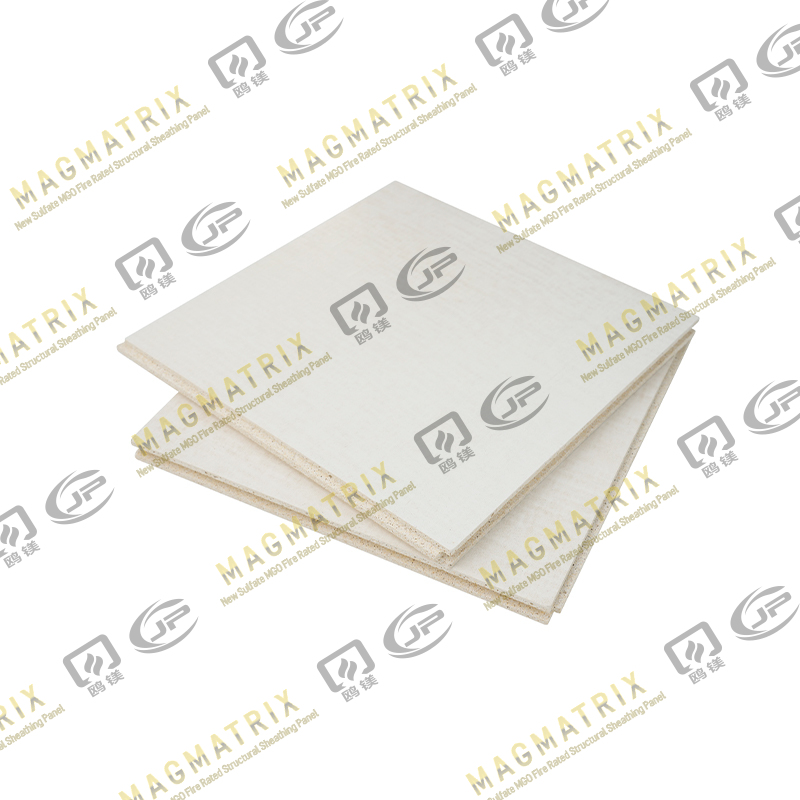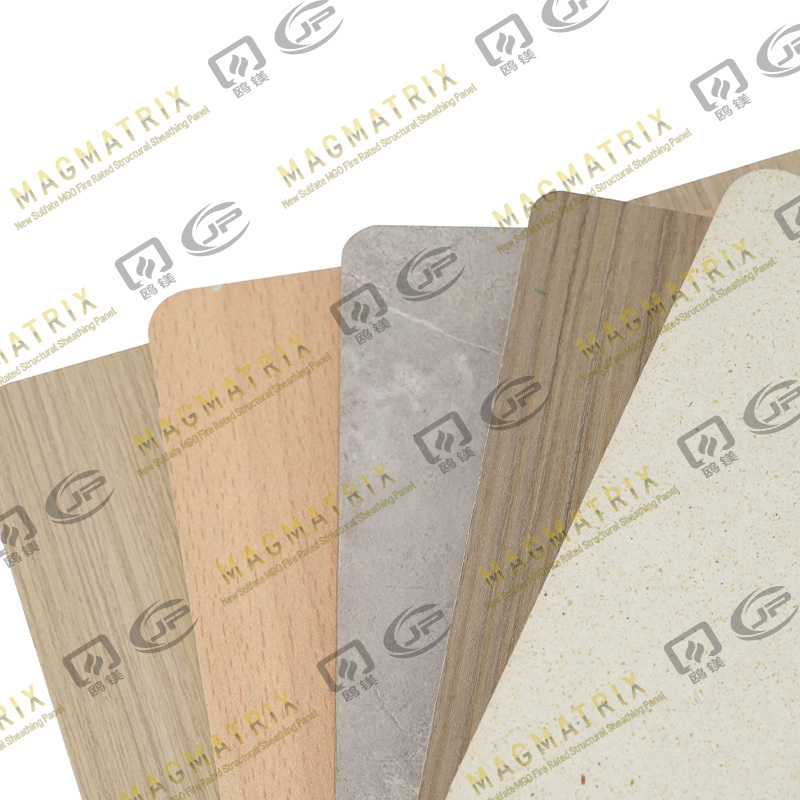
MgO board represents a remarkable breakthrough in construction technology. The iconic Taipei 101 showcases magnesium oxide wallboard's effectiveness through its fireproofing of beams, walls, and sub-floor sheathing. This versatile material has seen a surge in demand, with builders using about 740,000 square meters (8 million square feet) of magnesia board products across Asia.
MgO boards excel in multiple ways. These panels can withstand extreme temperatures, making them ideal for fire-rated applications. The boards resist moisture effectively and stop mold from growing both inside and outside buildings. Architects and builders choose MgO board sheathing as their go-to material for exterior walls. It maintains structural strength and helps protect against harsh weather conditions. The material's green credentials are noteworthy too. The manufacturing process needs less energy and produces fewer greenhouse gasses than traditional building materials.
This piece will teach you everything about MgO boards. You'll discover their many uses, learn proper installation methods, and see why they could be the right choice for your upcoming construction project.
Interior Applications of MgO Boards in 2025
MgO boards are changing how we build residential and commercial interiors. These amazing panels work with regular power tools. You don't need special equipment to cut, score, snap, or fasten them to wood and steel frames. This practical benefit makes them a popular choice for many indoor projects in 2025.
Use of MgO wallboard in residential interiors
Magnesium oxide wallboard brings exceptional benefits to residential spaces. MgO boards resist fire, mold, fungus, insects, mildew, water, and termites all at once. This makes them perfect if you have health concerns. The boards come in 6 to 20-millimeter thickness options with surfaces that can be rough, smooth, versatile, or utility-styled.
MgO boards work great in homes for:
· Structural floors and walls
· Fire-rated wall systems
· Subflooring applications
· Backerboard for tile installations
· Stairways and corridors
· Room partitioning
These boards weigh less than traditional fiber-cement or gypsum products, which makes installation easier. The finishing options seem endless. Contractors can paint them with just two coats, add concrete finishes, or put up wallpaper right on these versatile panels.
Quality magnesium oxide boards are great if you have allergies, asthma, or chemical sensitivities. These panels are non-toxic and contain no fly ash, formaldehyde, crystalline silica, or other toxins. This creates healthier indoor spaces. They work best in bedrooms, living areas, and spaces where air quality matters most.
Ceiling and partitioning with magnesium oxide panels
Magnesium oxide panels excel in interior walls and ceilings. Metal stud systems with these panels can resist fire for up to four hours. These panels meet strict fire safety standards with non-combustible (Class A) ratings that building owners trust.
MgO boards are perfect for non-load-bearing interior walls and partitions. They stay stable even when slightly bent and don't warp, swell, or delaminate during brief moisture exposure. This makes them reliable in spaces where humidity levels change often.
Commercial spaces use magnesium oxide panels in high-traffic areas like:
· Multifamily building common areas and stairways
· School classrooms, corridors, and gymnasiums
· College dormitories and shared spaces
· Healthcare facilities and hospitals
MgO boards shine in ceiling applications too. They're light enough to install easily in high-rise buildings while staying strong and durable. These panels also make excellent drop ceiling tiles in commercial spaces and offer better fire protection than standard options.
Moisture-resistant MgO backer boards for bathrooms
MgO boards really stand out in damp spaces. Quality MgO boards handle humidity well by absorbing minimal moisture while staying structurally sound.
MgO backer boards create an excellent base for tile in bathrooms, kitchens, and wet areas. They actively stop mold and mildew growth—crucial in spaces where humidity control is challenging. Tests show standard boards absorb just 0.34% moisture, which creates conditions where fungi and microorganisms can't thrive.
A bathroom renovation contractor found MgO boards worked great in shower installations. The boards kept water from seeping through shower pan seams, stayed the same size despite temperature and moisture changes, and held shower bars firmly without extra plywood backing.
Some MgO boards, like MagMatrix BMSC 517, are built specifically for wet spaces with special microstructures that work well in bathrooms and kitchens. These boards work best with waterproofing membranes and reinforcement scrim at wall-shower-pan seams to create complete moisture protection.
MgO boards solve common bathroom material problems. They don't soak up water because of low porosity, stay strong in humid conditions, prevent mold, and keep their shape even when wet. This makes them reliable for shower tile backing, bathroom walls, or kitchen backsplashes.
Exterior Applications of MgO Panels in Modern Construction
MgO boards outperform conventional materials in challenging outdoor environments. These panels serve as excellent exterior building components because of their unique mix of structural strength and ability to withstand environmental stress.
Weather-resistant sheathing for facades
MgO boards work as high-performance sheathing that shields building envelopes from harsh elements. The panels resist weather damage and help facades last longer in different climates. Quality magnesium oxide sheathing stays structurally sound when exposed to moisture without warping, swelling, or delaminating during regular use.
Notwithstanding that, MgO boards aren't completely waterproof though they handle moisture well. Sun, wind, and rain exposure without proper protection can reduce how long they last. Manufacturers recommend these steps to get the best results:
· Use a water-resistant barrier (WRB) system
· Shield from long-term moisture exposure
· Install 3-5mm expansion joints between panels
· Add suitable exterior finishes or cladding
Tests show MgO panels keep their mechanical properties during wet-dry cycles. OSB loses about 40% of its flexural strength and plywood drops 9% after 25 wetting-drying cycles, but MgO boards barely weaken.
MgO board use in fencing and soffits
MgO boards' exceptional durability makes them perfect for exterior trim where materials face tough environmental challenges. Common uses include:
· Fascia boards
· Soffits and eaves
· Exterior trim work
· Fencing components
MgO boards shine in soffit applications. Their fire resistance helps keep buildings safe by stopping flames from entering through eaves. The panels also allow ventilation while standing up to harsh weather. When installed properly, magnesium oxide soffits protect roof structures from moisture without rotting like wood-based options.
These panels make stable, durable fencing that outlasts traditional materials. They resist insects, salt, fungus, and moisture - perfect for property boundaries in any environment. MgO fencing keeps its looks without warping or splitting, even with changing humidity.
Fire-rated exterior wall assemblies
MgO boards' most impressive exterior use comes in fire-rated wall assemblies. These panels don't burn at temperatures up to 800°C (1,472°F) and qualify as noncombustible Class A materials. They show zero flame spread even at 1,200°C (2,192°F).
This excellent fire performance makes MgO boards valuable in code-compliant exterior wall systems. Manufacturers now offer fire-rated MgO sheathing systems designed for:
· Type I "Fire-Resistive" buildings (high-rises)
· Type II "Noncombustible" buildings (shopping centers)
· Type III construction greater than 40 feet above grade
MgO-based systems simplify wall assemblies while meeting codes. Traditional fire-rated exterior walls need multiple gypsum layers and other materials. MgO systems achieve the same ratings with fewer parts. Some MgO exterior walls get 2-hour fire ratings using just one layer outside, which cuts material and labor costs.
Buildings over 40 feet tall with combustible materials must meet NFPA 285 standards. Several MgO panels work well with different siding and water-resistive barriers. This helps architects and builders meet tough fire-safety rules while building faster.
MgO board use in exterior applications revolutionizes construction practices. Their weather resistance, structural strength, and fire performance make them valuable for modern building envelopes in residential, commercial, and industrial projects.
MgO Board in Flooring and Subflooring Systems
MgO boards show excellent performance as flooring and subflooring materials. These boards give builders better alternatives to traditional options. Their impressive features make them valuable in residential and commercial construction projects where durability and safety matter most.
High compressive strength for subflooring
MgO boards have excellent strength that makes them perfect for subflooring applications. These subfloor panels can carry a total load, both alive and dead, of 320 psf (15.3 kPa) when timber framing is spaced 24 inches (610mm) apart. Their dense composition and reinforced structure create this strong load-bearing ability. A 12mm thick MgO board can hold 16 lbs. pulling down and over 200 lbs. pushing sideways with just a #10 screw.
MgO subflooring stays stable unlike wood-based materials. It won't warp, swell, or delaminate when moisture hits. Your floors keep their integrity even as humidity levels change. One manufacturer puts it simply: "MgO panels are engineered to withstand heavy loads and resist warping or cracking over time".
The structural advantages of MgO subflooring include:
· Strong weight-bearing capacity works with standard 24-inch joist spacing
· Resistance to expansion and contraction with temperature or humidity changes
· High impact strength stays intact under stress
· Better durability in high-traffic areas
Of course, MgO boards provide structural support and fire resistance in 3/4" panels for subfloor use in commercial and multifamily buildings. These panels char instead of burning when exposed to fire and keep their structural integrity throughout exposure. You can use MgO panels for both fire resistance and structural strength on their own. Wood and gypsum-based products need multiple layers and added thickness to achieve similar results.
Thermal insulation and fire safety in floor underlayment
MgO boards deliver great thermal insulation properties in floor underlayment applications. Their thermal conductivity value of 0.038 W/mK is substantially lower than drywall (0.160 W/mK) and cement board (0.130 W/mK). These panels insulate better and improve energy efficiency by reducing heat transfer through floors.
MgO boards' thermal insulation creates multiple benefits:
· Lower heating and cooling costs due to less thermal bridging
· Better comfort through steady floor temperatures
· Better energy efficiency in buildings
· Stability against temperature changes, preventing expansion and contraction
The fire safety aspect of MgO floor systems stands out even more. These panels absorb large amounts of heat during a fire, which helps delay fire and smoke spread. This feature gives occupants and emergency personnel more time to evacuate and perform life-saving rescues.
EXACOR® underlayment panels are built to meet fire-rating, sound-rating, and dimensional stability requirements for multifamily and light commercial projects. These panels use magnesium oxide with an integrated mesh core. They resist fire throughout and provide fire resistance as part of rated floor/ceiling assemblies.
MgO boards can handle very high temperatures without burning—up to 1472°F (800°C). They don't break or deform in open flame for up to four hours. These boards won't release harmful fumes when exposed to high heat, which reduces smoke inhalation risk.
MgO boards ended up becoming popular in subflooring applications because they blend exceptional strength, moisture resistance, thermal properties, and fire safety into one material. This combination creates safer, more durable, and energy-efficient building systems in residential and commercial construction.
Roof Sheathing and Structural Use Cases
Roofing systems face unique challenges and need materials that can handle extreme conditions. MgO boards stand out in this field. They provide solutions that work for both protective and structural uses in modern construction projects.
MgO roof panels for fire-prone zones
Building safety in wildfire-prone areas depends on fire protection. MgO boards tackle this head-on with their exceptional fire-resistant qualities. These panels stay intact even at 800°C (1,472°F). They show zero flame spread when exposed to extreme heat of 1,200°C (2,192°F).
Flameblock OSB boards with magnesium oxide reinforcement give excellent fire protection. They maintain the structural strength needed for roof decking. This mix creates a resilient protective layer that substantially improves building safety in fire-risk areas.
MgO boards resist fire because they have these built-in properties:
· Low thermal conductivity that blocks heat transfer
· Heat reduction through crystalline and free water
· Transpiration processes that absorb thermal energy
· High heat reflectance that cuts down radiation absorption
Fire-retardant treated (FRT) MgO sheathing started in commercial buildings but now sees wide use in homes, especially in wildfire-prone regions. These panels add a protective layer under waterproof membranes or roofing materials while making the structure more rigid.
Unlike wood-based materials that help spread flames, MgO roof panels don't catch fire, create smoke, or release toxic gasses during fires. They release water vapor when heated, which helps cool and contain flames. This feature has earned them Class A1 non-combustible rating under strict testing standards.
Load-bearing capacity in structural roofing
MgO boards excel in structural performance and fire resistance. Their mechanical strength matches engineered wood and surpasses gypsum-based products by a wide margin.
Half-inch MgO panels showed they could hold more than 350 psf in shear with single fasteners. The withdrawal strength topped 150 pounds of force. This strong fastener grip lets you attach roofing materials securely without always tying back to framing members.
These panels' strength-to-weight ratio makes them great for structural uses. Tests prove they can handle hurricane winds over 230 mph without failing. This makes them vital for coastal areas that face stronger storms.
MgO boards stand out in roofing because they offer:
· Natural stiffness that stops flexing and wear during long wind exposure
· Better fastener grip that prevents connection failures when pressure changes
· High impact strength perfect for areas with frequent hail
· Stable dimensions that prevent warping or shrinking
MgO boards work great with Structural Insulated Panel (SIP) systems. This creates roofs that resist impacts, high winds, and moisture all at once. You won't need regular framing, extra insulation, or roof trusses since everything comes in the panels.
Field tests show builders can put these MgO systems together quickly. They create watertight roofs in just days—this helps a lot in hurricane zones where weather often stops construction. The lightweight design makes them easier to handle than cement-based options.
MgO roof panels blend fire safety, structural strength, and weather resistance. Whether used alone as sheathing or as part of complete structural systems, these adaptable boards beat traditional materials in tough applications.
Comparing MgO Board vs Drywall and Cement Board
Picking the right construction materials requires a good understanding of how different board types stack up against each other. MgO boards are a standout choice compared to traditional options like drywall and cement board in several key areas.
Fire resistance: ASTM E119 vs UL 055
MgO boards excel at fire resistance and outperform conventional materials. Quality MgO panels score a zero on the ASTM E84 Steiner Tunnel Test, which means flames don't spread on their surface at all. These boards keep this impressive rating even 20 minutes past the standard test time.
The tougher ASTM E119 test (also known as ANSI-UL 263) measures how long an assembly stays structurally sound during fire exposure. MgO boards shine here too - some products earn 1-hour and 2-hour fire ratings. These ratings work on both sides of wall assemblies to provide complete fire protection.
Standard gypsum boards offer limited fire protection through their crystalline water content. The protection doesn't last long and has clear drawbacks:
· Gypsum boards start breaking down above 100°C
· They lose most mass and elasticity between 100-200°C
· Complete calcification happens in 20-30 minutes at 400°C, leaving zero bending strength
Cement boards meet ASTM E136 noncombustible standards but aren't a match for MgO's performance. High temperatures above 800°C break down cement boards and cause burning cracks or explosive failures.
Moisture absorption and mold resistance
MgO boards handle moisture better than other options. Quality magnesium oxide boards absorb just 0.34% moisture while gypsum board soaks up much more at 3%. This basic difference explains why MgO boards stay strong even in damp conditions.
Mold can't grow on MgO panels. Their non-organic makeup doesn't feed mildew or fungus, unlike paper-faced gypsum products. Cement boards do well in humid conditions but soak up water over time. This can lead to decay without proper maintenance.
MgO boards work great in bathrooms and kitchens with high humidity. They resist moisture and stop mold and mildew from growing. Research shows MgO boards are a great way to get better fungal protection than traditional building materials.
Weight and installation differences
MgO boards weigh 20-30% less than other cement-based boards. This lighter weight brings several benefits:
· Lower shipping costs
· Less worker tiredness and fewer injuries
· Quicker installation with less effort
· Better handling on-site
Installation sets these materials apart too. MgO boards work just like familiar materials such as drywall or oriented strand board. Builders can use regular tools to cut, nail, score, snap, screw, or hang these panels from wood or steel framing. The light weight and smooth surface make them easy to work with.
Fiber cement boards weigh more and take more work to cut. They need special tools, which makes installation get pricey and take longer. Drywall installation feels familiar to most contractors but struggles in wet areas and isn't as durable as MgO panels.
MgO boards combine the best features of both alternatives. They offer cement board's fire resistance and durability plus drywall's easy installation while avoiding their weaknesses.
Key Benefits of Magnesium Oxide Boards in 2025
MgO boards are revolutionizing construction in 2025 with their amazing properties and real-world benefits. These panels are game-changers that bring value to construction projects of all types.
Non-toxic and silica-free composition
MgO boards stand out because they're incredibly clean and safe. You won't find any asbestos, formaldehyde, benzene, or other harmful substances in these panels. This makes them perfect for hospitals, schools, and green buildings where clean air is crucial.
These boards are safer than traditional materials because they don't contain:
· Organic solvents or oils
· Heavy metal salts
· Crystalline silica
The non-toxic makeup of these boards qualifies them as "Inherently Non-Emitting" for LEED certification. Construction workers love them because there's no risk of silica dust exposure during installation.
These panels are a great choice for people with allergies or chemical sensitivities. The boards keep indoor air clean without releasing harmful compounds. Their safety comes from simple ingredients - magnesium oxide, magnesium chloride or sulfate, and reinforcing fibers.
Sound insulation: STC-rated 53-54
Sound control is another huge advantage of MgO panels. Lab tests show these boards hit impressive STC ratings between 53-54 on UL-rated commercial assemblies. Hotels, offices, and homes that need peace and quiet benefit from this excellent sound control.
The boards block sound really well because of their solid structure. A 6mm MgO board stops 29dB of noise, while a 9mm double-panel system with metal studs and rockwool blocks over 42dB. This beats other building materials of similar thickness.
MgO panels work so well at blocking sound because they're heavier and denser than alternatives. That's why you'll find them in recording studios, hospitals, and schools where quiet environments matter most.
Energy efficiency in production (780°C calcination)
The manufacturing process of MgO boards is budget-friendly and eco-conscious. Magnesite only needs 780°C to calcine, which uses way less energy than Portland cement or calcium oxide that need 1,400°C. This means lower carbon emissions and production costs.
The numbers tell the story - production creates just 340 kg of CO2 per metric ton, compared to 740 kg from traditional concrete materials. This is a big deal as it means that the construction industry, which creates 37% of global emissions, can reduce its carbon footprint.
Room temperature curing helps save even more energy. Buildings using MgO SIP panels use up to 70% less energy for heating and cooling. This makes them a smart choice for sustainable construction.
Installation Guidelines and Best Practices
The right installation techniques will affect how well MgO boards perform and last in construction projects. Using correct methods will give these innovative panels their promised benefits and help avoid potential risks.
Scoring, snapping, and fastening techniques
You can score and snap MgO boards like drywall to make quick, straight cuts. Thicker boards need a circular saw with a carbide blade or fiber cement shears for cleaner results. Drilling pilot holes before adding fasteners prevents cracks and creates secure attachments.
The choice of fastener material makes a big difference. Traditional MGO boards (MgCl) need ceramic coated or stainless steel fasteners. MagPanel (MgSO4 board) installations can use regular steel fasteners. Many experts suggest using 316-stainless steel materials for all fasteners to prevent corrosion.
Fastener placement must follow these guidelines:
· Position fasteners no closer than 4" from corners
· Space perimeter fasteners 6" apart
· Place center fasteners 12" apart
· Install approximately 9/16" from board edges
· Never install fasteners at 45° angles
Start fastening from one side and work your way across the board to reduce stress.
Manufacturer-specific curing and handling instructions
Store MgO boards in cool, dry places like other sheet building materials before installation. Stack boards flat on dunnage or matting instead of the ground, and don't let them bow or stack other materials on top.
Let panels adjust to room temperature and humidity for 48 hours, preferably in the space where you'll install them. Room temperature should be 60-80°F (10-27°C) with humidity between 40-60%.
Quality and panel consistency depend heavily on curing, which often needs specific proprietary processes. Some manufacturers rush this step by curing MgO in uncontrolled environments for just days, which leads to major property issues.
Avoiding 'crying board' issues in humid climates
"Crying" or "weeping" boards happen because of poor manufacturing, especially when mix design isn't consistent and MgCl2 hasn't fully reacted. This mostly occurs in humid climates when unprotected panels allow the 5-phase hydrate to break down.
Keep panels away from rainwater and big humidity changes to prevent moisture problems. Use polyurea or modified epoxy fillers for seams in flooring applications.
The MgO's quality - how uniform, pure, and reactive it is - determines how well it performs. Adding phosphates and reactive silicates helps reduce free chloride problems effectively.
Sustainability and Global Supply Chain Considerations
Environmental factors shape how builders choose construction materials for sustainable buildings. Magnesium oxide boards bring game-changing advantages that transform sustainable construction approaches.
Recyclability and low carbon footprint
Magnesium oxide boards stand out with their green credentials throughout their lifecycle. MgO board manufacturing creates just 340 kg of CO2 per metric ton, compared to 740 kg for calcium oxide-based materials. This means a direct 50% cut in carbon emissions.
Production efficiency comes from the calcination process—MgO needs only 780°C, much lower than Portland cement's requirement of 1400°C. Many manufacturers run the entire curing process at room temperature and reuse scraps in production.
MgO boards shine in these areas:
· Complete recyclability at end-of-life
· Zero volatile organic compounds (VOCs)
· No heavy metals, crystalline silica, or asbestos
· Biodegradability under the right conditions
Recycled MgO boards find new life in soil remediation, wastewater treatment, and emissions control.
China's export restrictions on magnesite ore
China has led global magnesite production, which created major supply risks. The country suspended exports of critical minerals in April 2025, including rare earth magnets needed for manufacturing. This decision affects global supply chains for many materials, including magnesium oxide.
Chinese customs now blocks these material exports to all countries. Special licenses are required but haven't been properly implemented yet. China produced 99% of the world's heavy rare earth metals until 2023, giving them control over this vital resource.
Sourcing challenges and alternatives in North America
North American manufacturers now face pressure to find new supply chains. Mountain Pass mine in California remains the only rare earths mine in the United States, offering a possible partial solution.
Seawater extraction shows promise with magnesium concentrations ranging from 1.29–1.35 g/L. Local sourcing cuts transportation-related emissions, which helps the environment.
LEED certification requires projects to source 10% of materials within 500 miles of construction sites. This requirement sparks interest in developing regional MgO production capacity to keep environmental benefits while solving supply chain issues.
Conclusion
MgO boards have proven their worth in many applications. These innovative panels are changing how we build today with their unique mix of fire resistance, moisture resilience, and structural strength.
When compared to drywall and cement board, MgO boards are clearly better. They don't burn even at 1,472°F, absorb only 0.34% moisture, and provide excellent sound insulation with STC ratings of 53-54. These features make them perfect for projects where safety and performance matter most.
The green benefits of MgO boards are impressive. Production needs much less energy at 780°C while Portland cement requires 1,400°C. This cuts carbon emissions by half. MgO boards are recyclable, non-toxic and are the foundations of modern environmentally responsible building.
Builders find MgO boards easy to work with. They use standard tools to score, snap, and fasten just like other materials but get better results. China's export limits on magnesite ore have created supply issues. But new North American sources and seawater extraction methods are a great way to get materials locally.
MgO boards will shape construction's future. They help create safer, stronger, and greener buildings. Their mix of performance, easy installation, and sustainability makes them the smart choice for innovative construction projects in 2025 and beyond.
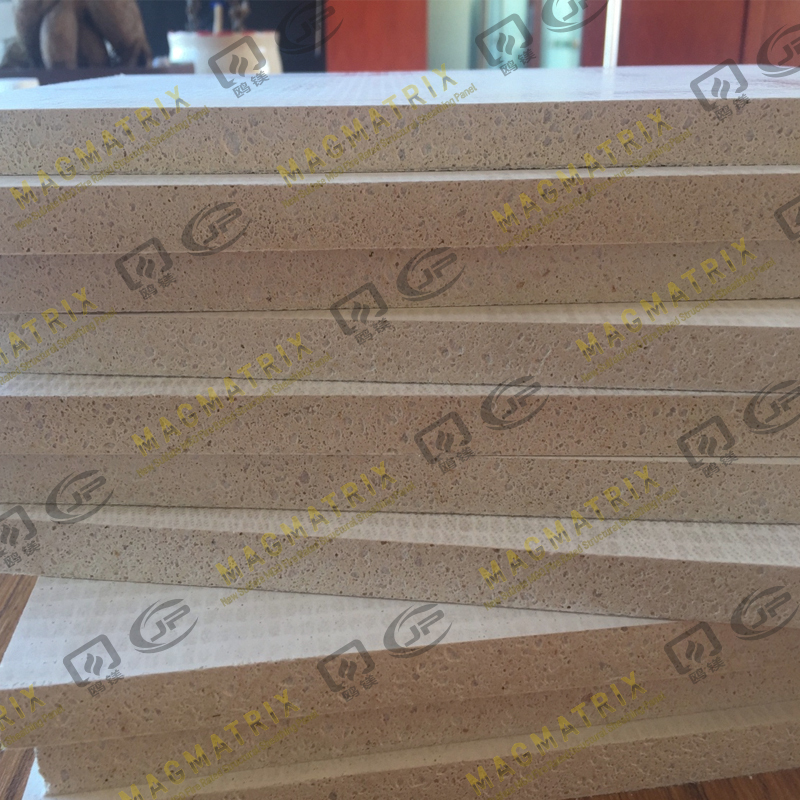 BMSC 517 هیئت مدیره New Sulfate MGO
BMSC 517 هیئت مدیره New Sulfate MGO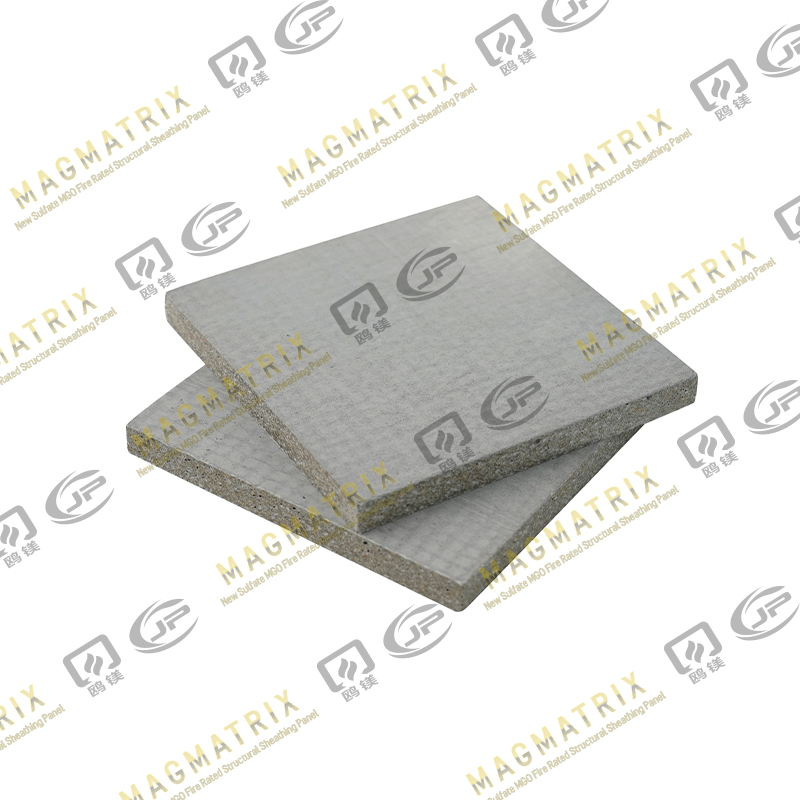 صفحه پوشش دیواری چند پشتیبانی MGO
صفحه پوشش دیواری چند پشتیبانی MGO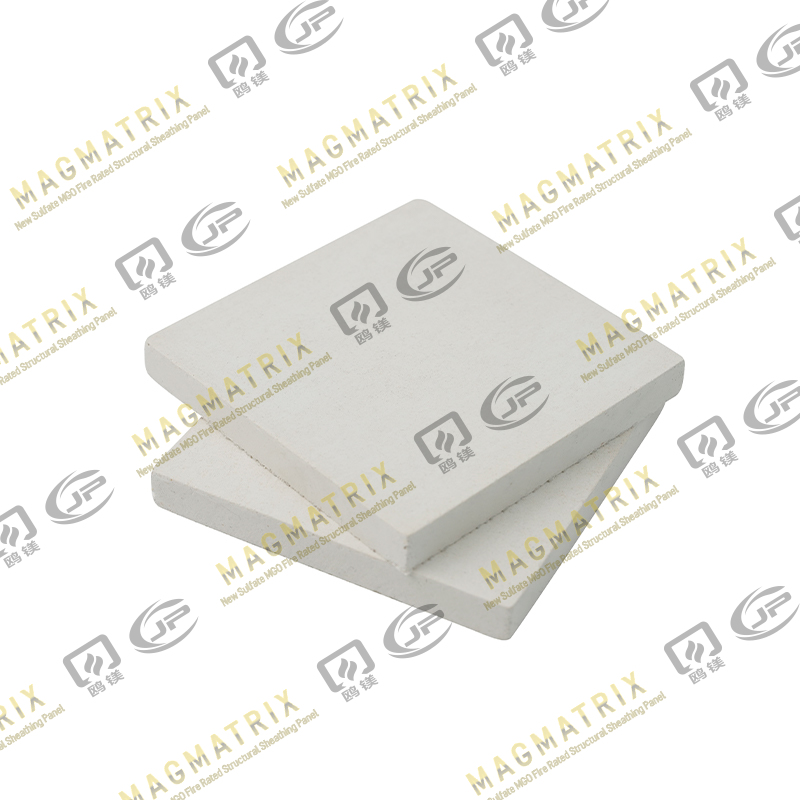 تابلوی لوازم جانبی دیواری MGO
تابلوی لوازم جانبی دیواری MGO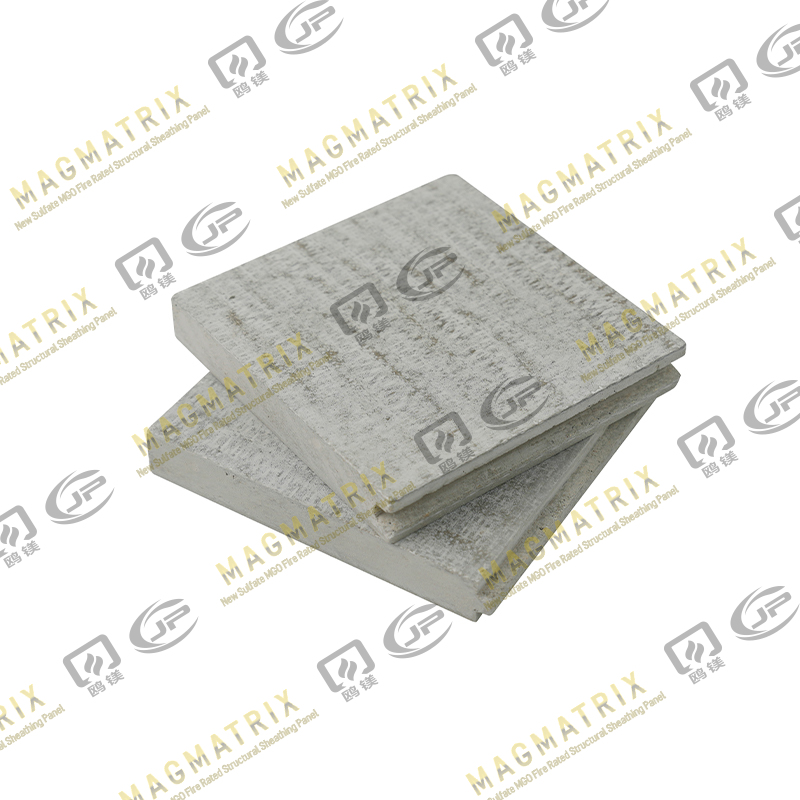 صفحه پوشش زیر کفپوش MGO چند پشتیبانی
صفحه پوشش زیر کفپوش MGO چند پشتیبانی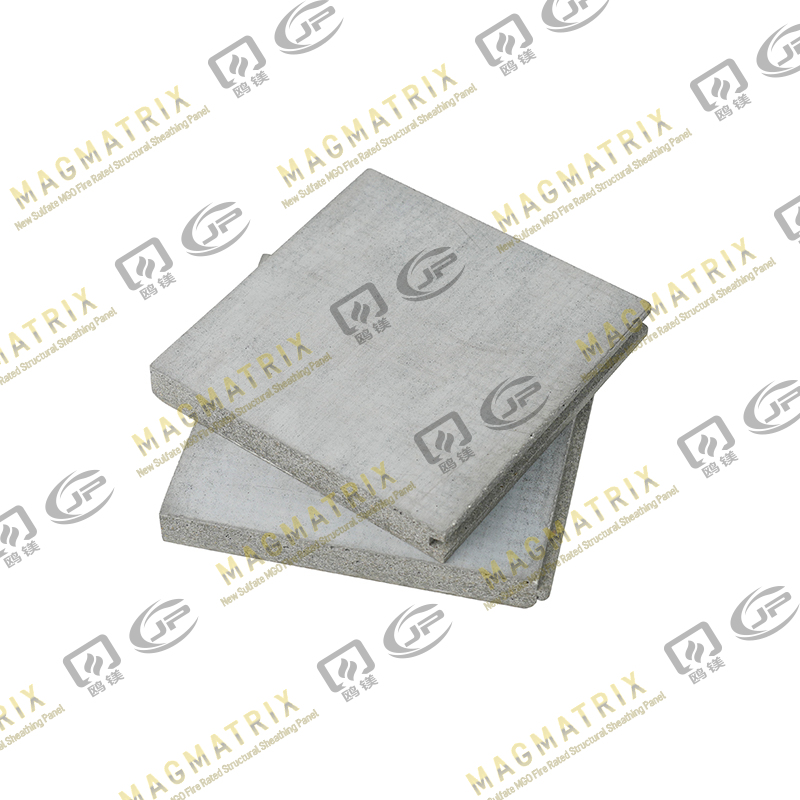 تابلوی غرق در زیر کف MGO MGO
تابلوی غرق در زیر کف MGO MGO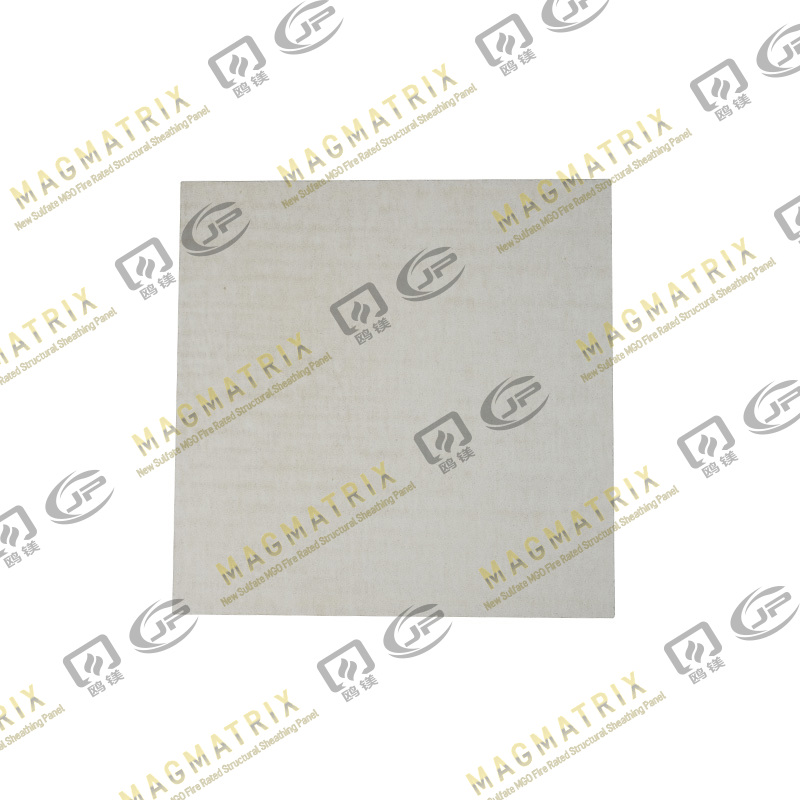 پانل/تخته زیر لایه Magmatrix MGO
پانل/تخته زیر لایه Magmatrix MGO



